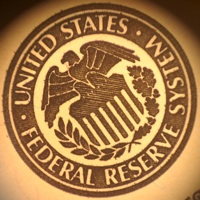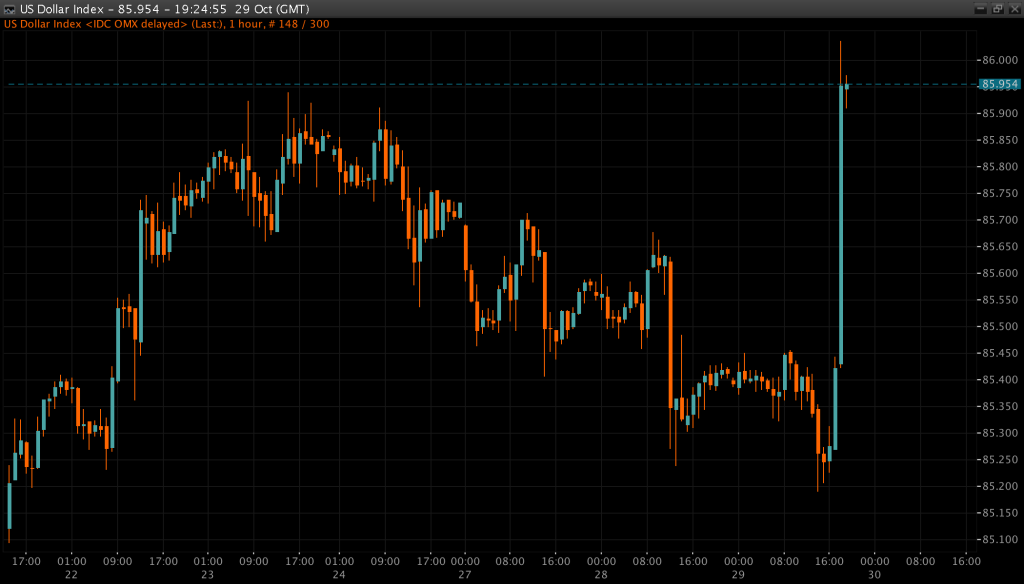
The US Federal Reserve's Open Market Committee (FOMC) has just concluded its latest monetary policy meeting and the result is the widely expected end of the Fed's bond buying program also dubbed "tapering". The quantitative easing (QE) effort by the U.S. central bank, targeted at keeping long-term interest rates closer to zero.
However, this decision has been widely expected by the markets and the key aspect of the Fed's decision today has been the release of the monetary policy statement which is supposed to shed light on how the FOMC thinks about the future timing of rate hikes.
While there hasn't been any indication about the Fed actually resorting to rate hikes any time soon, the bond markets and the US dollar have interpreted the statement as very hawkish.

Hourly US Dollar Index Chart, Source: NetDania
The US dollar rose across the board, trading about 0.8% higher against the Euro (1.2645) and the British pound (1.6015), 0.7% higher against the Japanese yen (108.76) with the biggest loser being the New Zealand dollar (0.7839) falling about one percent as of writing.
There have been two sentences in the FOMC's statement which caught the attention of traders. The members of the committee stressed on the labor market recovery saying, "A range of labor market indicators suggests that underutilization of labor resources is gradually diminishing."
On inflation we are reading, "Although inflation in the near term will likely be held down by lower energy prices and other factors, the Committee judges that the likelihood of inflation running persistently below 2 percent has diminished somewhat since early this year."
"Diminishing" Is Key!
The "diminishing" slack in the labor market and likelihood of low inflation continuing was all the US dollar bulls needed to hear. According to the Fed, risks to the opposite side of its dual mandate have been in concert with the labor market recovering faster than expected and inflation likely to rise higher than present levels.
There is no telling what Mr. Market thinks about that for now. We have repeatedly seen foreign Exchange traders overreact to small clues dropped by central bankers, however it appears as if at present, the US dollar's strength has a bit more room to stay as gold lost 1.5% of its value in today's trading so far to trade at $1210.80 as of writing.
Challenges remain going forward however - as the Fed roughly maintains the size of its balance sheet, (which is only partially true, since the central bank will still be reinvesting its proceeds into government bonds) the pressure on asset prices could lead the US central bank to reconsider its intentions to raise interest rates and the US dollar course would reverse.
According to the market for short-term interest rates there is a likelihood of a rate hike by the Fed in September 2015, however we have been here before - only to get another round of QE a couple of months later.
Goldman Sachs announced that it is increasing its short positions in fed-funds futures and the market seems to be playing the same tune this historical evening, when the Federal Reserve announced the end of predetermined bond buying for the third time. How long will it last this time around?

















